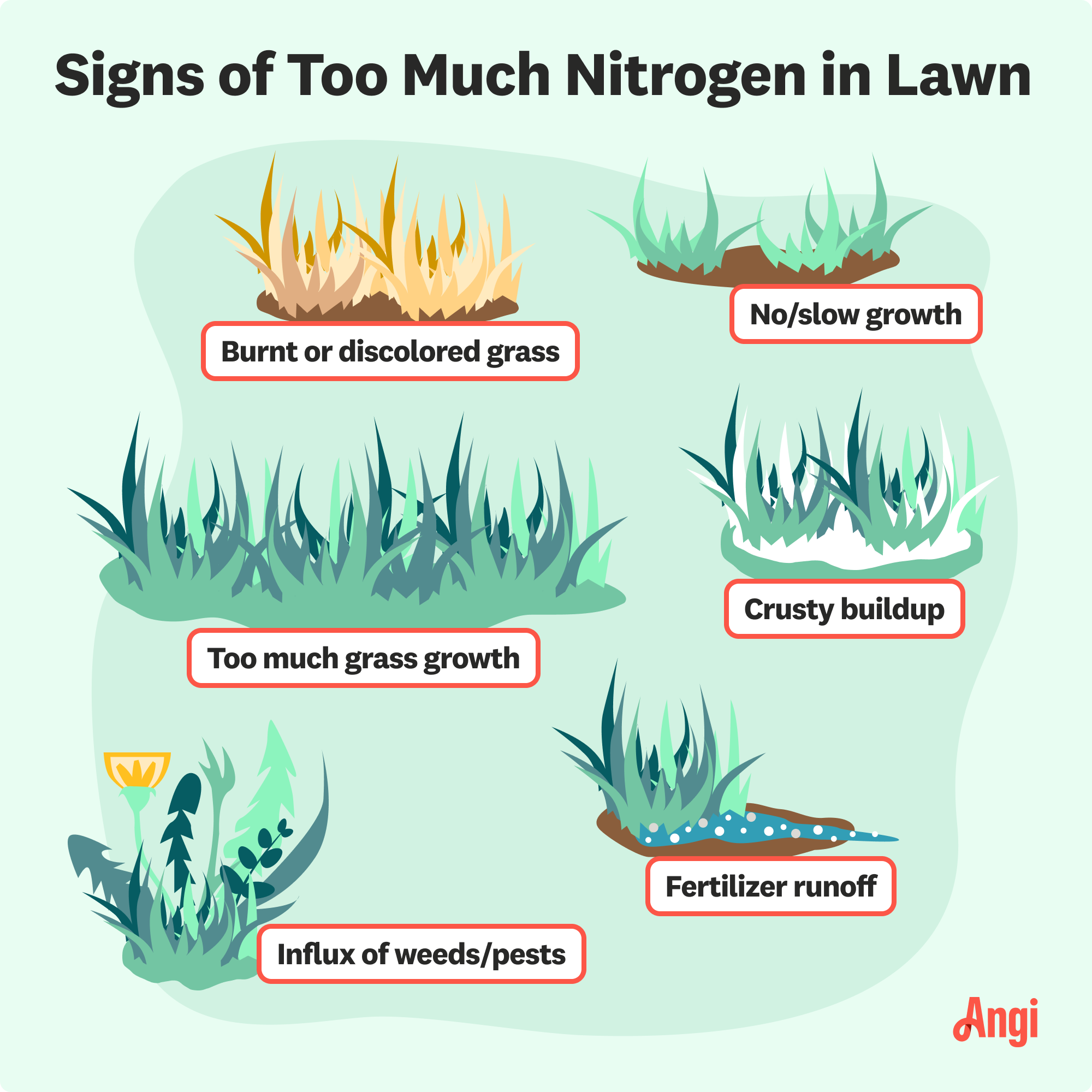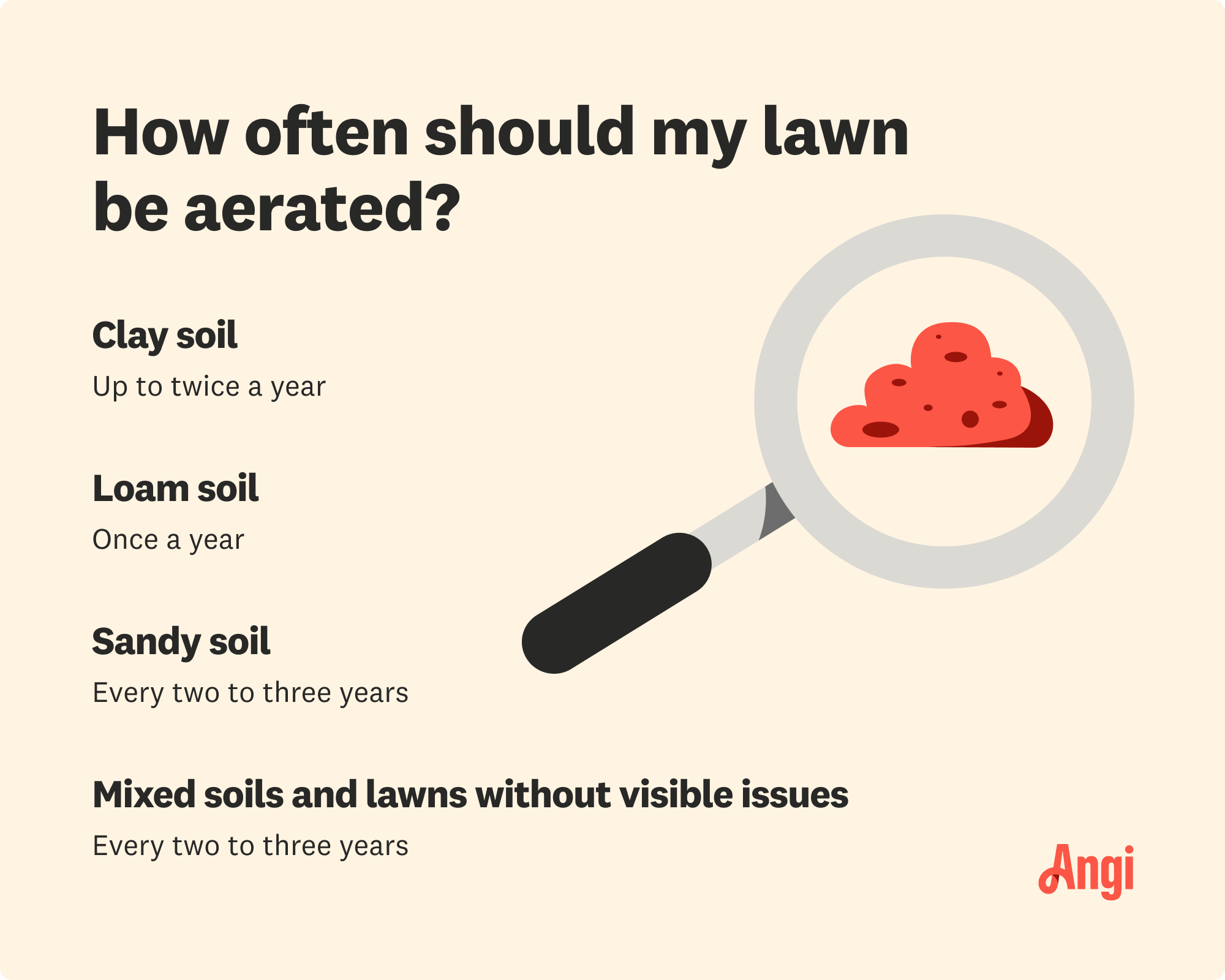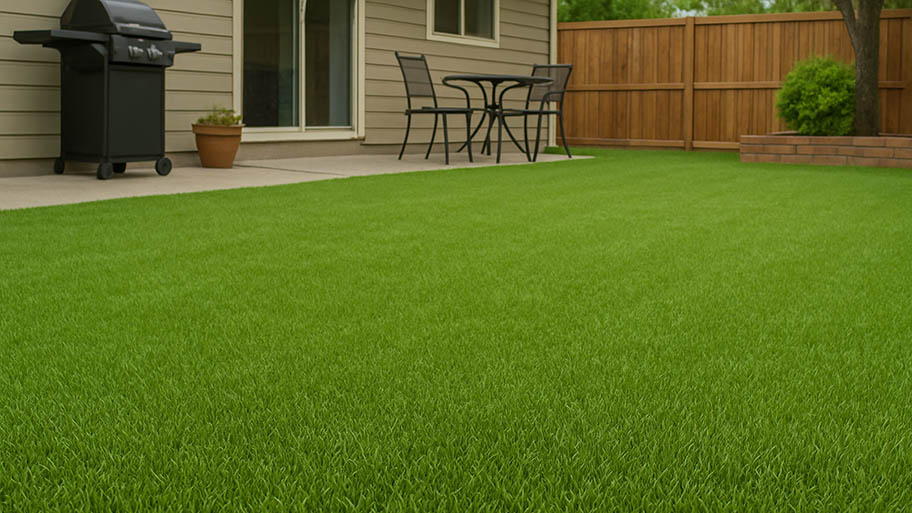
Your total lawn care cost depends on several factors, including the type of service and lawn size. Our guide will cover what you can expect to pay for lawn care.
Sometimes, too much of a good thing can be a bad thing


Too much nitrogen will harm your lawn instead of helping it.
Common causes are overfertilizing and pet urine.
Warning signs include burnt grass, affected growth, and weed or pest infestation.
You can DIY a fix if you catch the signs early, but a lawn pro can also help.
Nitrogen is a key nutrient in grass fertilizer. But too much of this nutrient can actually be a bad thing for your lawn. If you want a healthy, green yard, you’ll need to keep an eye out for signs of too much nitrogen in the lawn, which is often caused by overfertilizing or animal urine. (Sorry, pet owners.) Let’s take a look at why excessive nitrogen is bad for grass and what you can do about it.
At first, it seems like adding more nitrogen to your lawn would be the way to go. After all, nitrogen promotes the production of chlorophyll, a crucial part of photosynthesis, which is the process by which plants convert sunlight into food.
The right amount of nitrogen promotes thicker, healthier, and greener grass. That’s why it’s found in fertilizers along with other nutrients like phosphorus and potassium. However, overfertilizing your lawn can backfire by damaging it instead.
Pet owners who are diligent with their lawn maintenance schedule can still experience nitrogen overload because there is a good deal of nitrogen in animal urine. If you have brown spots scattered throughout your yard, this is one instance where you can truly blame the dog (or cat).

Fortunately—or rather, unfortunately—it’s easy to notice when your lawn is at the mercy of a nitrogen overload. Here are some common warning signs.
Too much nitrogen can actually burn the grass, turning it into straw. Pet owners know this well because there will be brown spots that pop up throughout their yard where their furry companions relieve themselves.
You’d think too many nutrients could be a good thing, but not when it comes to grass. Too much nitrogen results in an imbalance for your lawn, so it’s not uncommon for grass to grow in patches or not grow at all.
On the other hand, if your grass is growing at a more rapid clip than usual, especially in certain areas of your yard, nitrogen could also be to blame. Don’t confuse rapid growth with strong grass, though. A lawn that’s too rich in nitrogen isn’t healthy.
When too much fertilizer is applied to the lawn, whatever is not absorbed leaves behind a white, crusty residue on the grass and soil.
Grass might not grow well in soil that’s overloaded with nitrogen, but weeds sure can. Pests that like to hang out in weeds will often congregate there, too.
If you detect strong, earthy odors coming from your yard (especially after a rainstorm), it could be a sign of fertilizer runoff. This is a problem for ecosystems at large because the excess nutrients from fertilizers can enter local water sources and form algal blooms, putting aquatic life at risk.
You’ll know if there’s fertilizer runoff on your own property if you see unplanned grass or plant growth. This means that the soil has absorbed the fertilizer and any excess seeds from the runoff.
If you’re seeing more brown than green in your yard, or more dirt than blades of grass, it’s time to hire an expert to fix your lawn.
Call a lawn care pro near you to see what the best move for your lawn is. Overseeding could do the trick, or perhaps less fertilizing and more watering. It might even be a gentle redirection of your pets to relieve themselves in a different, less conspicuous part of the yard.
However, if the problem is ongoing, it might be that the entire lawn needs to be replaced with fresh seed or sod. Not only will an experienced lawn pro be able to do this for you, but they’ll also give you guidance on how to avoid excessive nitrogen in the future.
It’s possible that you can restore your grass on your own, but only if you catch the warning signs of too much nitrogen in your lawn early. This is a good rule of thumb for any DIY project: The earlier you spot an issue, the easier it will be to fix it on your own.
If you think you’ve recently overfertilized, it might just take some extra watering to ensure that the fertilizer is absorbed into the ground. Aeration can also help the soil absorb nutrients better. Also, if only a small part of the yard is affected, know that it’s easier to DIY than if the entire yard is affected.

Now that you know that too much nitrogen is a big problem for your lawn, here are some ways to protect your lawn from damage.
Follow fertilizer directions carefully—don’t use too much or too often.
Choose a slow-release fertilizer that promotes better nutrient absorption.
Water the lawn well after fertilizing.
Take a mowing break—let the longer blades absorb more of the nutrients.
Aerate the soil to allow water and nutrients to soak in.
To prevent runoff, don’t fertilize when there’s heavy rain in the forecast.
Redirect pets to a different area of the yard to relieve themselves.
The cost to renovate a damaged lawn is between $0.75 and $4.00 per square foot. The extent of the lawn damage will impact the price, too—more damage requires more labor and supplies to fix it. If you’ve noticed the signs of too much nitrogen early on, though, there’s a good chance that you’ll pay on the lower end of the price range.
Homeowners can expect to pay between $70 to $7,900, with an average cost of about $4,000 to restore their lawn after damage from too much nitrogen.
From average costs to expert advice, get all the answers you need to get your job done.

Your total lawn care cost depends on several factors, including the type of service and lawn size. Our guide will cover what you can expect to pay for lawn care.

How much it costs to rent a lawn aerator depends on what kind you rent and how long you rent it for. Read on for the full details.

Artificial grass is a low-maintenance alternative to traditional turf. Learn how much artificial grass installation costs and what affects your price.

Curious how to kill weeds in your grass and keep them from popping up every season? Here are five weed-fighting methods to beautify your lawn.

A bumpy, uneven lawn can create a safety hazard, impede water drainage, make mowing difficult, and more. Learn how to level a lawn and when to call a pro.

Hydroseeding can speed up grass growth and provide extra nutrients for your soil. Learn all about DIY hydroseeding and the steps to take for a great lawn.